Join 3,000+ subscribers
Featured in


Applying to jobs online is like navigating a maze.
Amidst the special torture that is resume parsing software, the inability to reuse information across different application tracking systems (ATS), and the existence of a certain company that rhymes with every day of the week, it can get pretty frustrating.
I wanted to explore what factors make a job application more or less frustrating.
For example, what industries have the worst application processes? Do big companies ask for more information than small companies? What is it about websites like Workday that make them really hard to use?
To answer these questions, I applied to 250 jobs. One by one. Click by click. No Linkedin Easy Apply, no shortcuts – just straight from the careers page.
I timed how long it took me to go from “apply to job” to “submit application”.
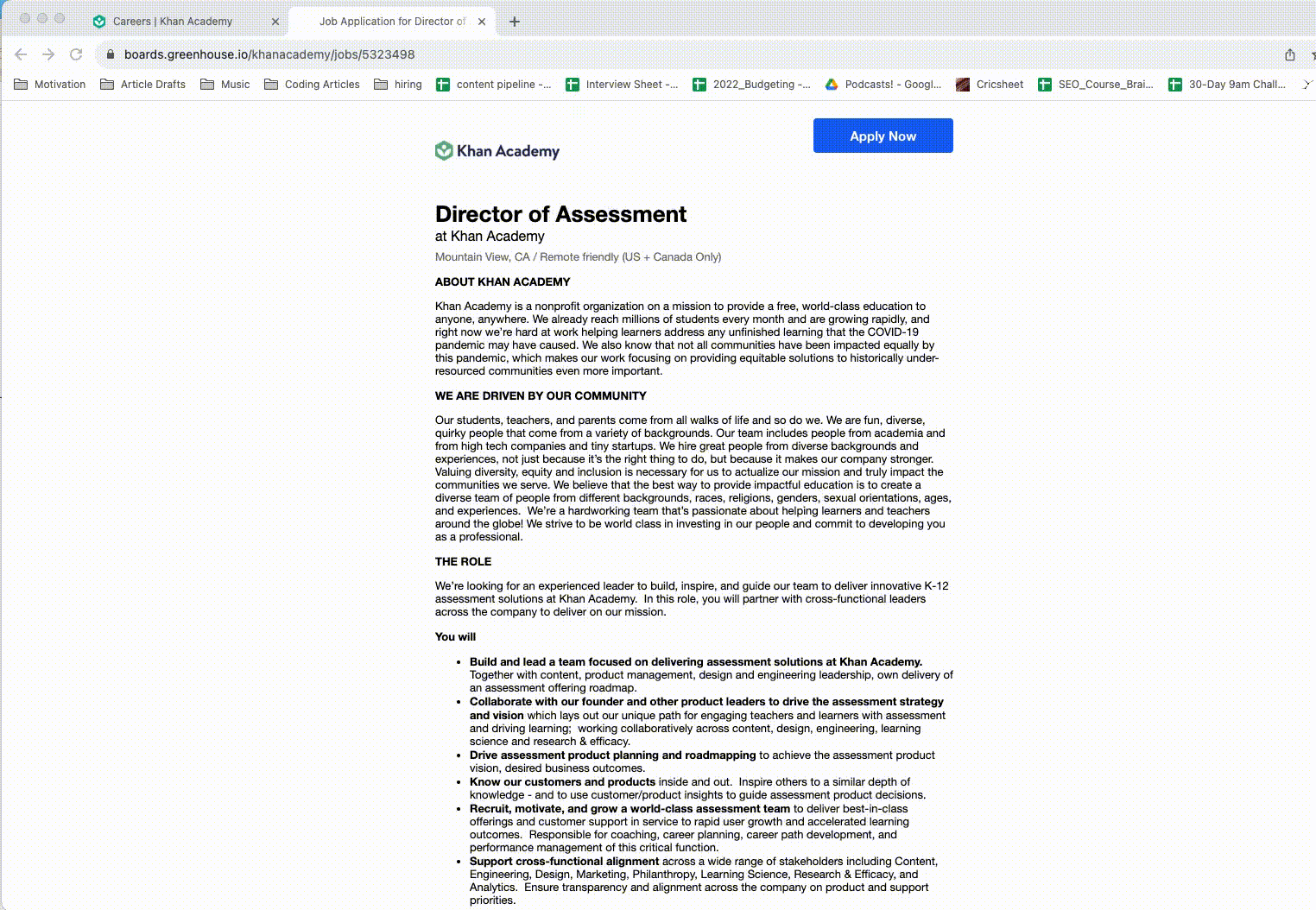
Make no mistake: I sacrificed my soul for this article. I created over 83 accounts and spent a total of 11 hours scrolling. I was originally going to do this for 500 companies, but wanted to chop my head off halfway.
I did this for a mix of companies – Fortune 500 to early stage startups, spread out across different industries from software to manufacturing. The type of role I applied to was kept constant: engineering / product focused.
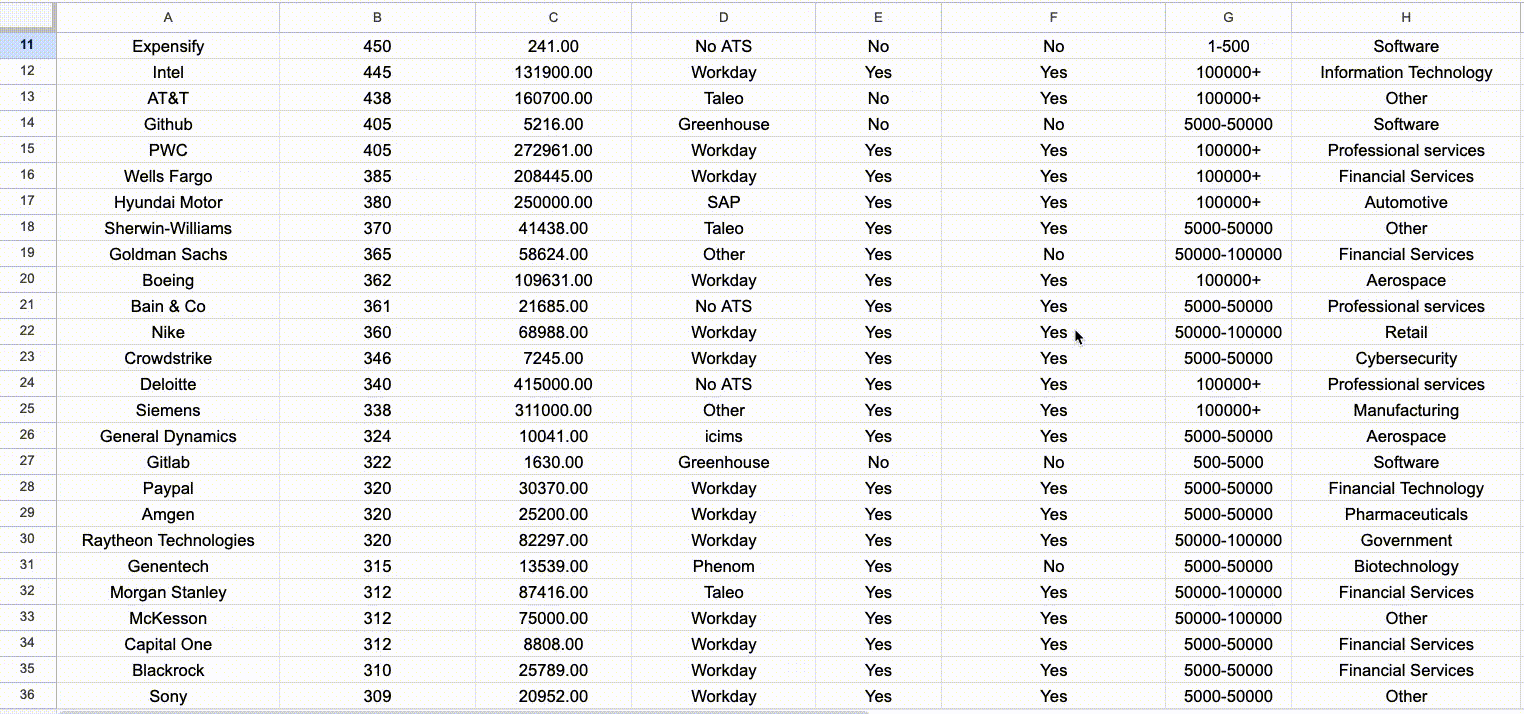
The outcome? An average of over two and a half minutes per application—162 seconds of your life you'll never get back. But as we dig deeper, you'll discover that these 162 seconds only scratch the surface of an often maddening process.
- Average Application Time: On average, it took a bit over two and a half minutes to apply to a job.
- Company Size Impact: If company size doubles, the application time increases by 5%. If company size increases by a factor of 10, then the app time increases by 20%.
- Industry Influence: Being a government company is the single largest determinant of a long application, followed closely by aerospace and consulting firms.
- Longest Application: The longest application time went to the United States Postal Service (10 minutes and 12 seconds).
- Shortest Application: On the other hand, It took me just 17 seconds to apply to Renaissance Technologies.
- ATS Impact: Older ATS like Workday and Taleo make job applications as much as 128% longer.
If you'd like to access the complete raw data, I can send you the Google Spreadsheet via email here.
Let's dive in.
The Setup
There’s no real method to the 250 companies I pick. I’m just typing names into Google and trying to vary it up. Where does Trisha work? What was that billboard I saw? It's all up for grabs.
Here’s the distribution of the 250 companies by size:
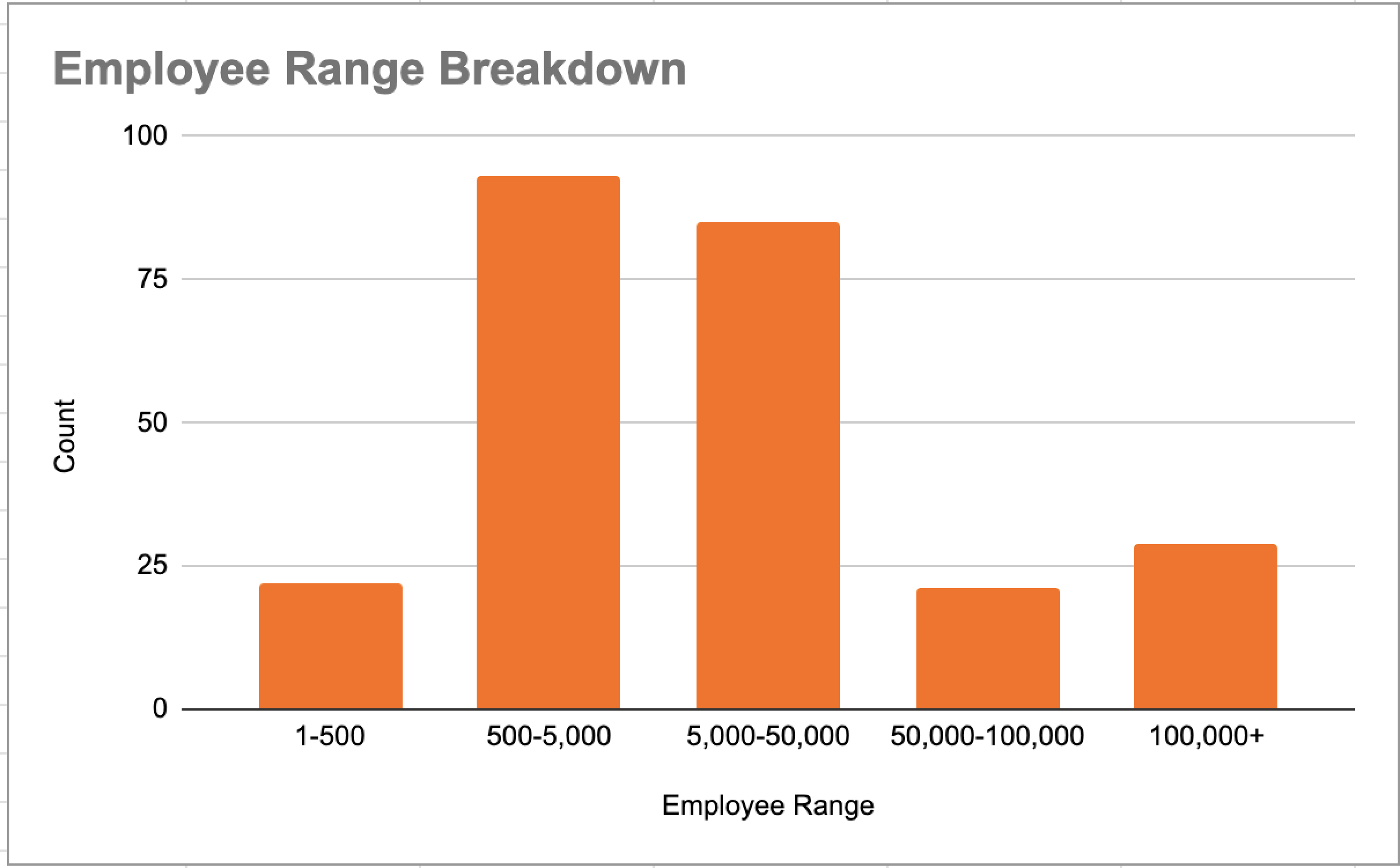
Some examples of companies in each range:
- 1-500 → Glean, Quizlet, Gumroad
- 500-5,000 → Notion, Dolby, Moloco
- 5,000-50,000 → Airbnb, Genentech, Logitech
- 50,000-100,000 → HP, American Express, Pfizer
- 100,000+ → Wells Fargo, Lockheed Martin, General Motors
And here’s a look at the different types of industries represented:
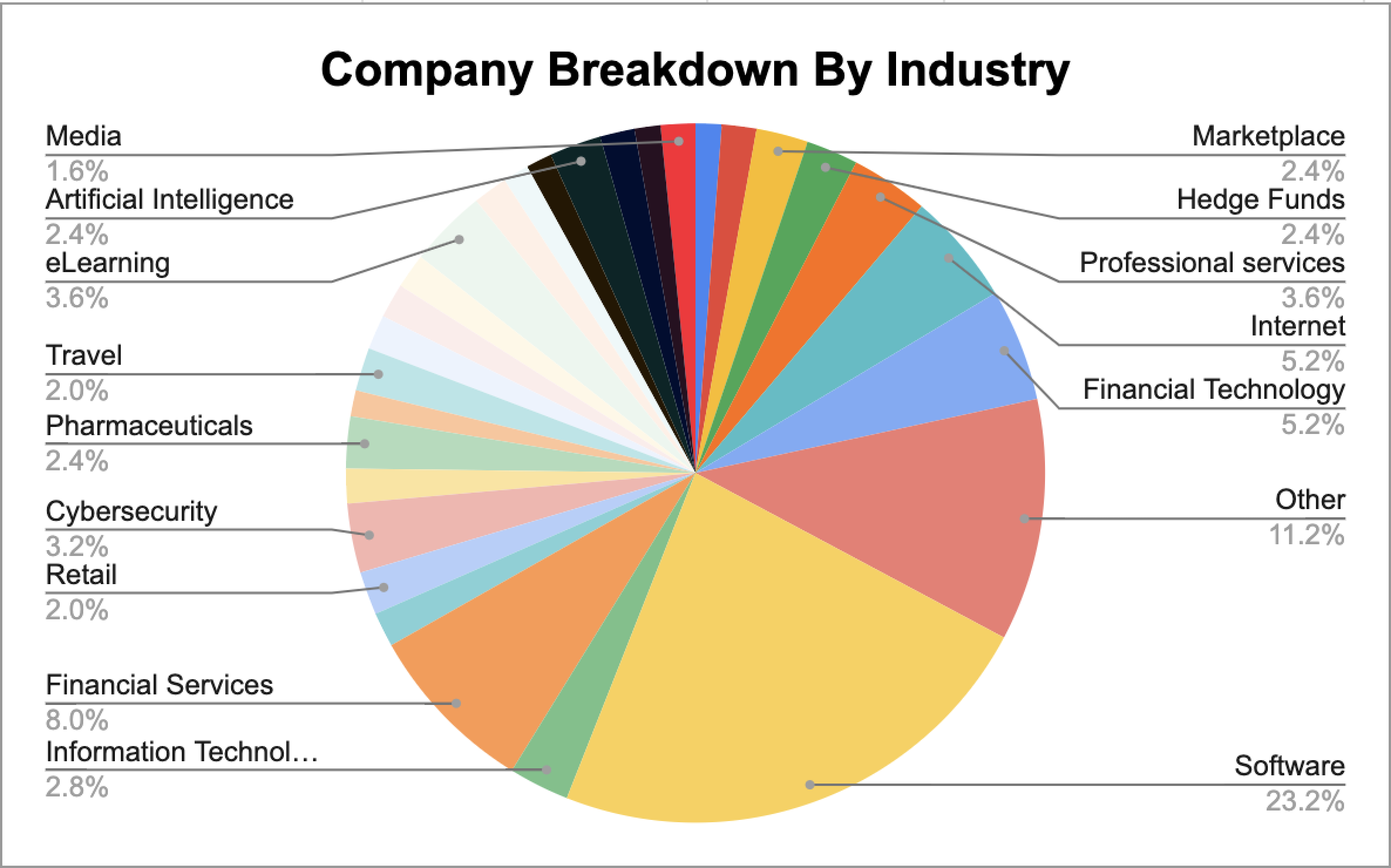
I used a mix of Linkedin and Crunchbase for categorization.
Before we get started, if you’d like you can read up on my methodology for applying to each job (aka assumptions I made, what data I chose to submit, and how much effort I put into each application).
What makes a job application so frustrating
Generally speaking, the more frustrating a job application, the longer it takes to complete.
The three main factors that might influence how long a job application is (as measured in my data):
- Company size → I would expect bigger companies to ask more questions.
- The ATS that is being used → I would expect clunkier, older ATS to make job applications longer.
- Company industry → I would expect more “traditional” industries to ask more questions.
We’re going to model the relationship between the above three factors and the amount of time it takes to complete a job application. To do this, we’re going to use a technique called linear regression.
Regression is about the way two measurements change together. It can help us make predictions.
For example, if I add 10 employees to a company, how many seconds will that add to the company’s job application process?
Since we have other factors like ATS and Industry, we will also account for those. For now, though, let’s just focus on each factor one by one.
Company Size
Let’s first plot the data as is:
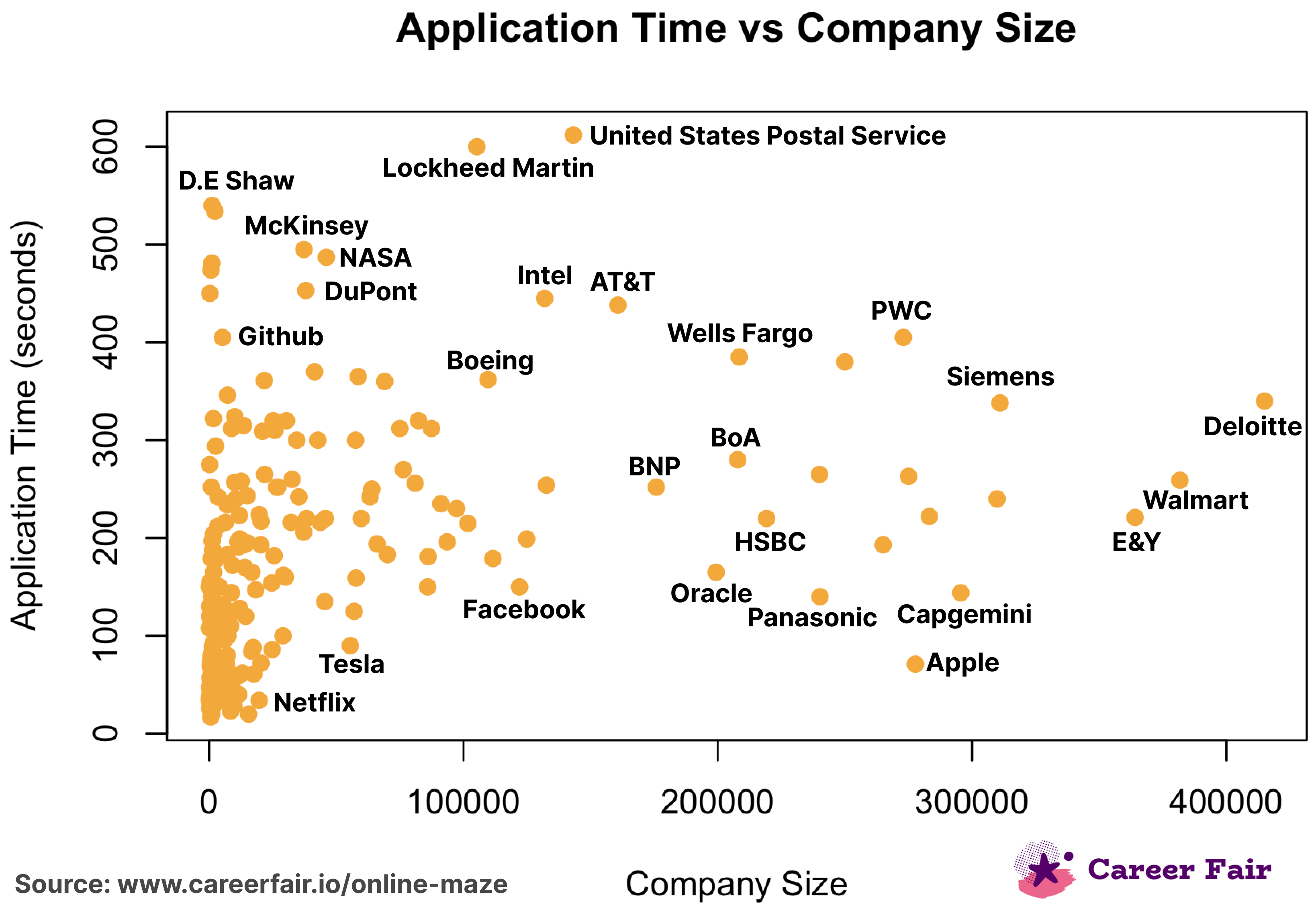
Yes, I know, this isn’t the most useful graph. I’m going to spruce it up real quick, I promise.
The United States Postal Service has a job application that took over 10 minutes to complete. Navigating their portal felt like using Internet Explorer in 2003:
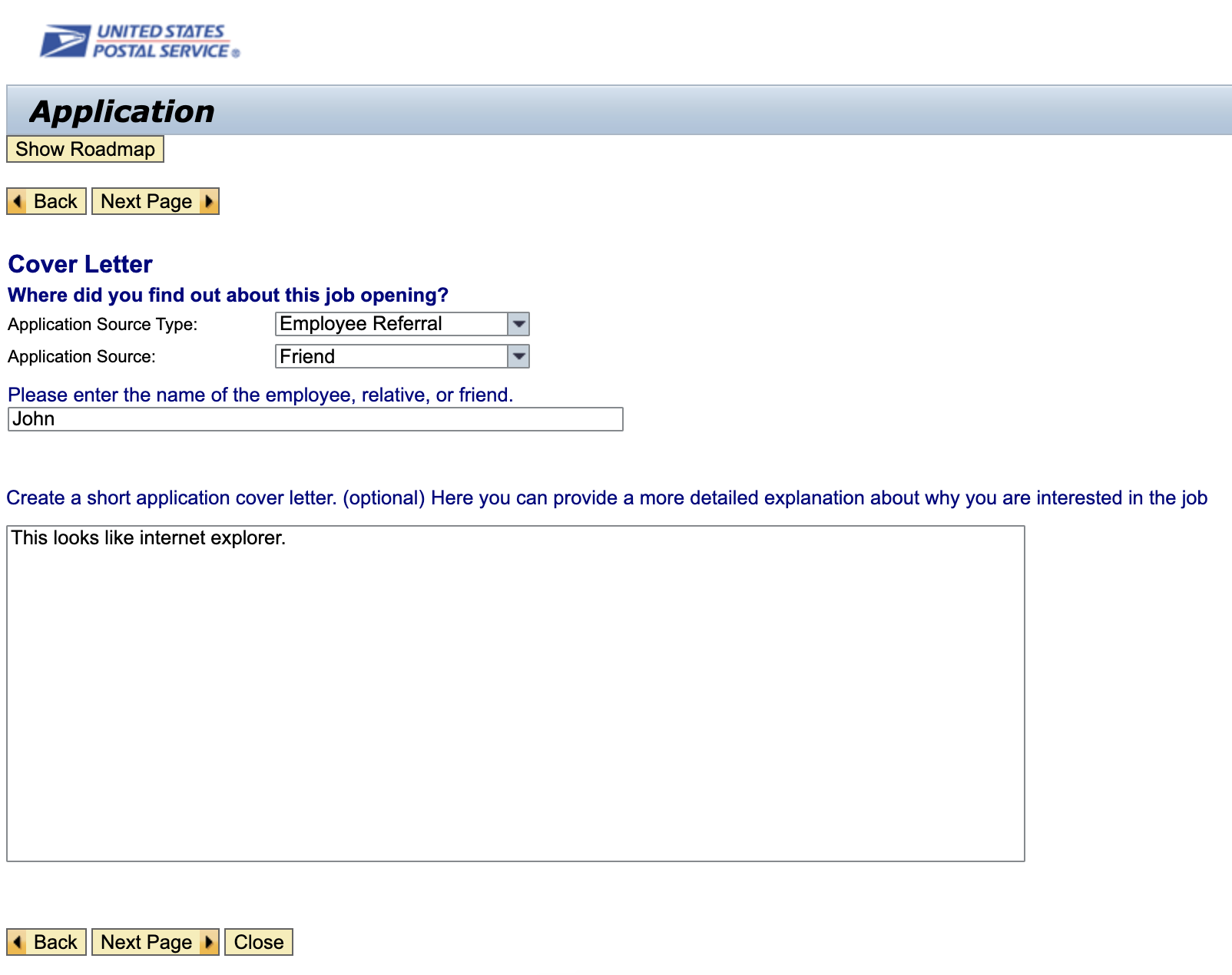
Netflix’s application was just 20 seconds - their only mandatory requirements are your resume and basic info.
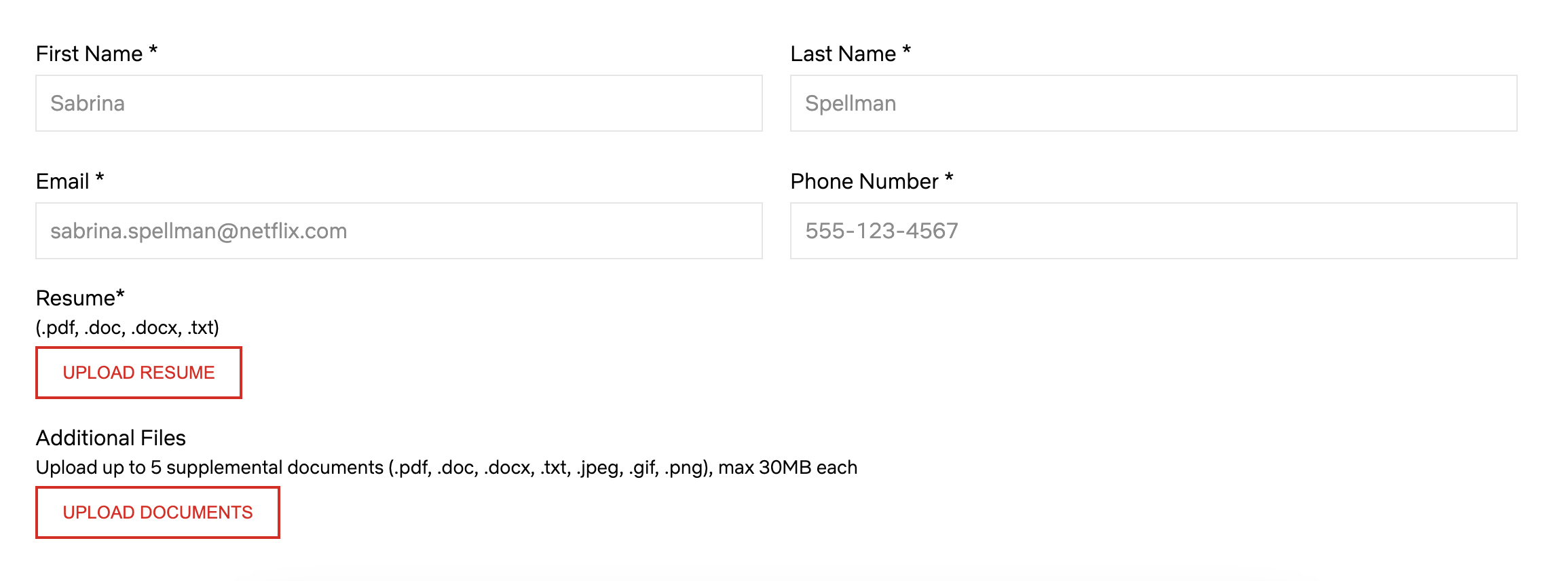
Apple took me 71 seconds, still pretty fast for a company that has over 270,000 employees (PWC, which has a similar number of employees, took me almost six times as long).
Okay, back to the chart. There are a couple of problems with it.
First, the data is not linear. This is a problem if we want to use linear regression.
Second, the company size scale is hard to interpret because of the many data points clumped together near zero (representing all the smaller companies).
We can resolve both these issues with the following insight:
There is a big difference between going from 10 to 100 employees and, say, 10,000 to 10,100 employees. The first represents major changes in company structure: you might actually hire a proper HR team, a bunch of recruiters, and build out your candidate experience. The second, though, is pretty much just business as usual - think of a multinational opening up a satellite office or a regular month of hiring.
Since we want to account for this, our data is better suited to a log scale than a linear scale. I will also transform our Y-axis, the application time, to a log scale because it helps normalize the data.
If we plot both our variables on a log-log scale, we get the below chart:
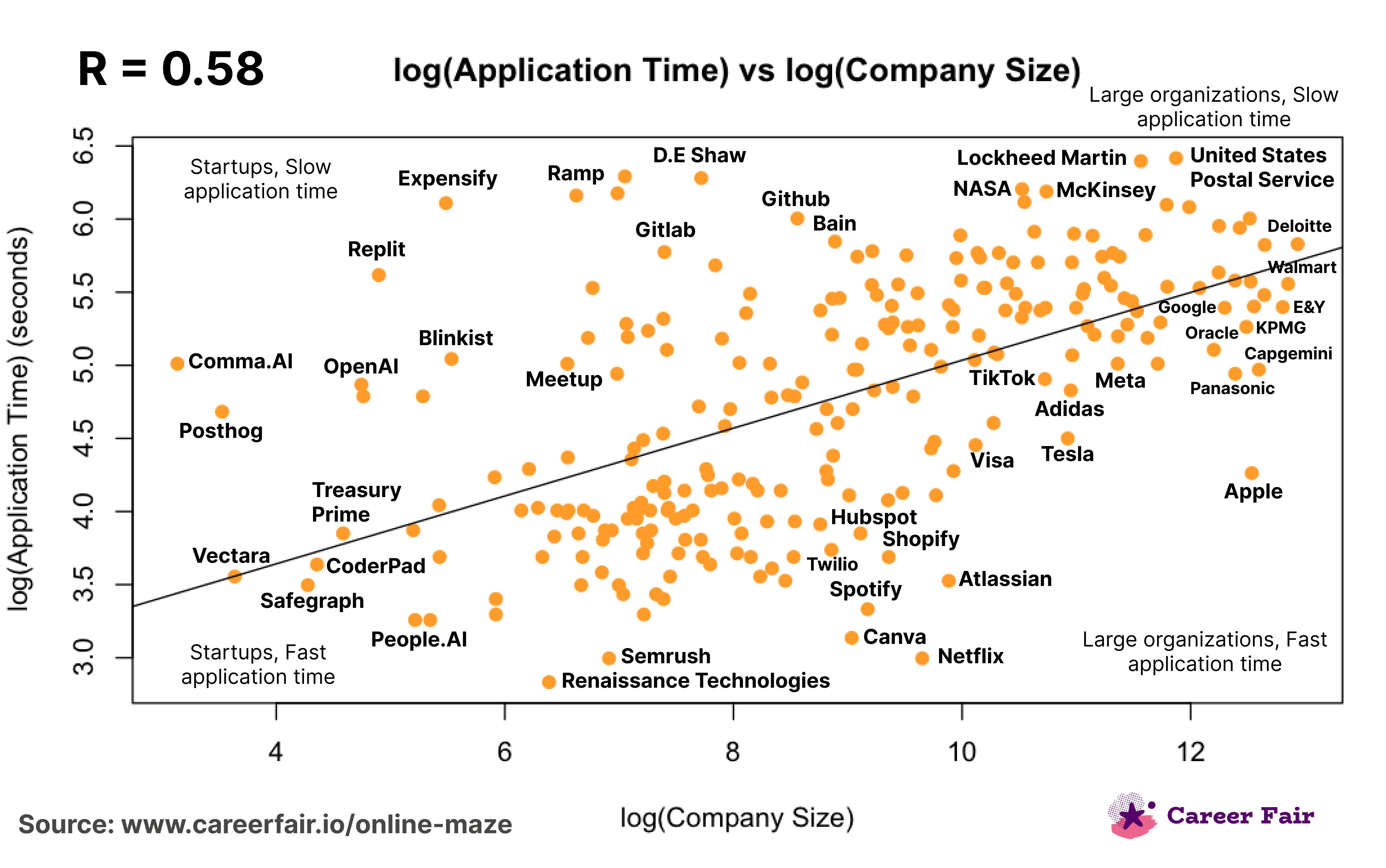
Better right? This is the same data as the last chart, but with different axes that fits the data better, we observe a linear relationship.
We have the usual suspects in the top right: Government organizations, professional services firms, and some of the tech industry dinosaurs.
The variance in application times across smaller companies, like startups, is interesting. For example, many of the startups with longer application times (e.g OpenAI, Posthog, Comma.AI) reference that they are looking for “exceptional” candidates on their careers page. (Note that OpenAI has changed its application since I last analyzed it - it’s now much faster, but when I went through they asked for a mini essay on why you’re exceptional).
One thing that I was expecting to see was competitors mirroring each other’s application times. This is most closely represented with the consulting firms like Deloitte, E&Y, KPMG, etc all clumped together. McKinsey and Bain, the two most prestigious consulting firms, have applications that take longer to complete.
This doesn’t necessarily seem to be the case with the FAANG companies.
We can also calculate the correlation coefficient for this graph. This is a statistical measure of the strength of a linear relationship between two variables. The closer to 1 the value, the stronger the relationship.
For the above data, we get a correlation coefficient of 0.58, which is a moderate to strong association.
Note that on its own, this doesn't tell us anything about causation. But it does start to point us in some type of direction.
It's not rocket science: big companies ask for more stuff. Sometimes they ask for the last 4 digits of your SSN.
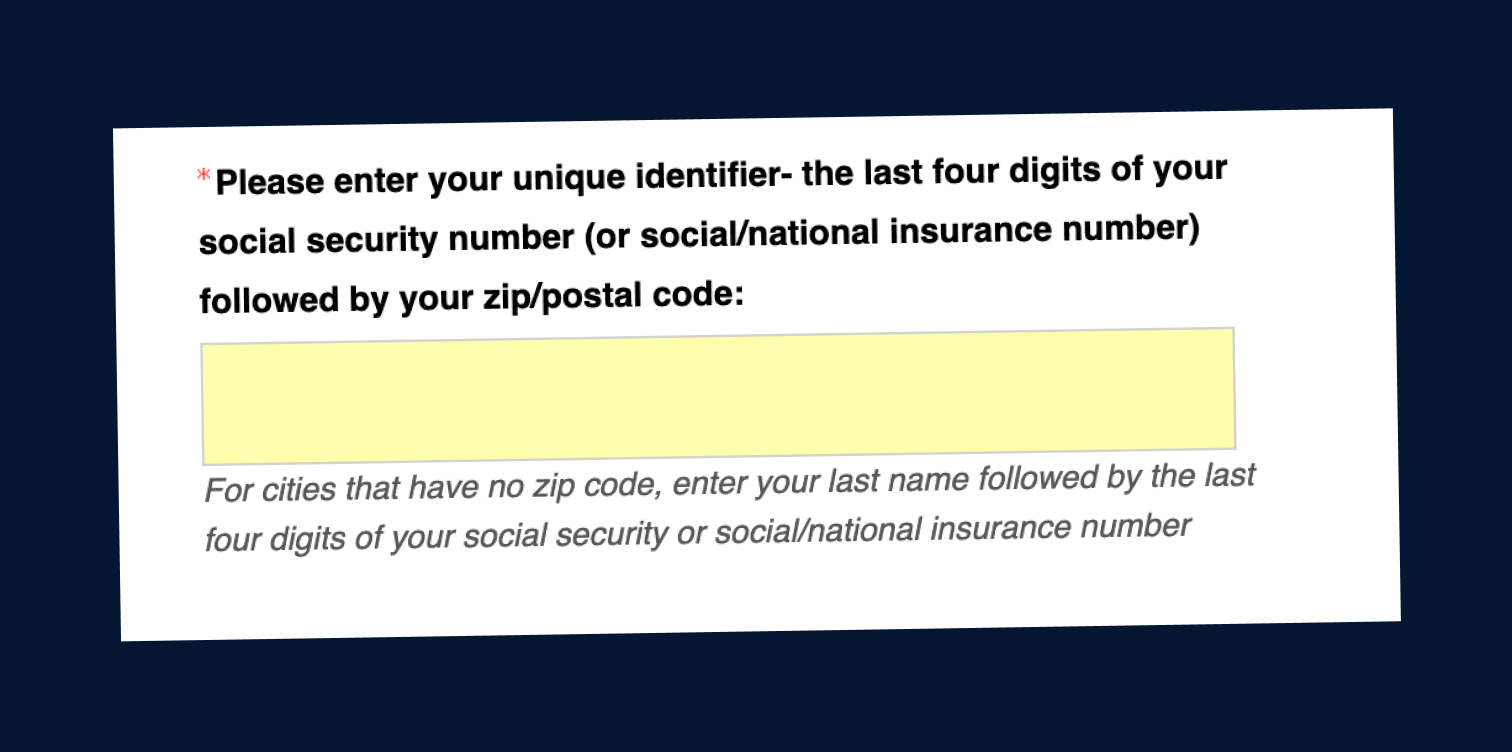
Sometimes they even ask if you’d be okay going through a polygraph:
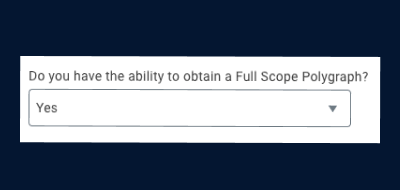
And sometimes they even ask you to explain employment gaps:
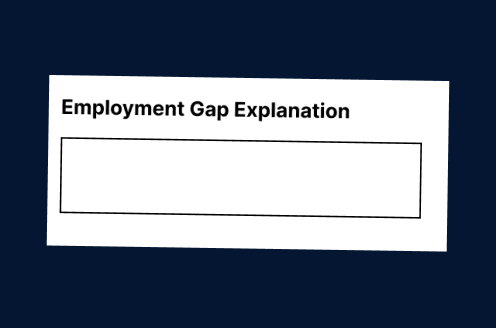
An argument here is that if big companies didn’t have some sort of barriers in their application process, they’d get swarmed with applications.
Consider the fact that Google gets 3 million applications every year. Deloitte gets 2 million. Without some sort of initial friction in the application process, those numbers would be even higher. That friction almost serves as a reliable filter for interest.
If you’re an employer, you don’t really care about the people using a shotgun approach to apply. You want the candidates that have a real interest in the position. On the other hand, if you’re a candidate, the reality is such that the shotgun approach to apply is arguably the most efficient.
So we have this inherent tension between companies and candidates. Candidates want the most bang for their buck, companies don’t want thousands of irrelevant resumes.
And in the middle, we have the plethora of application tracking software that can often be quite old and clunky.
Sorry to interrupt
I hope you're enjoying the article. In my next article, I investigate the Strange World of Referral Bonuses - enter your email and I'll deliver it straight to your inbox when it's out in 3 weeks.
ATS
Everytime I came face to face with a company that used Workday as their ATS, I died a bit inside. This is because Workday makes you:
- create a new account every single time
- redirects you away from the careers page
I defined a redirect as one when the job description is not listed on the same page as the first input box part of the application.
This isn’t a perfectly accurate measure, but it does allow us to differentiate between the modern ATS like Greenhouse and older ones like Workday.
With every ATS, I implicitly had some type of “how easy is this going to be” metric in my head.
We can try to represent this “how easy is this going to be” metric a bit more concretely using the matrix below.
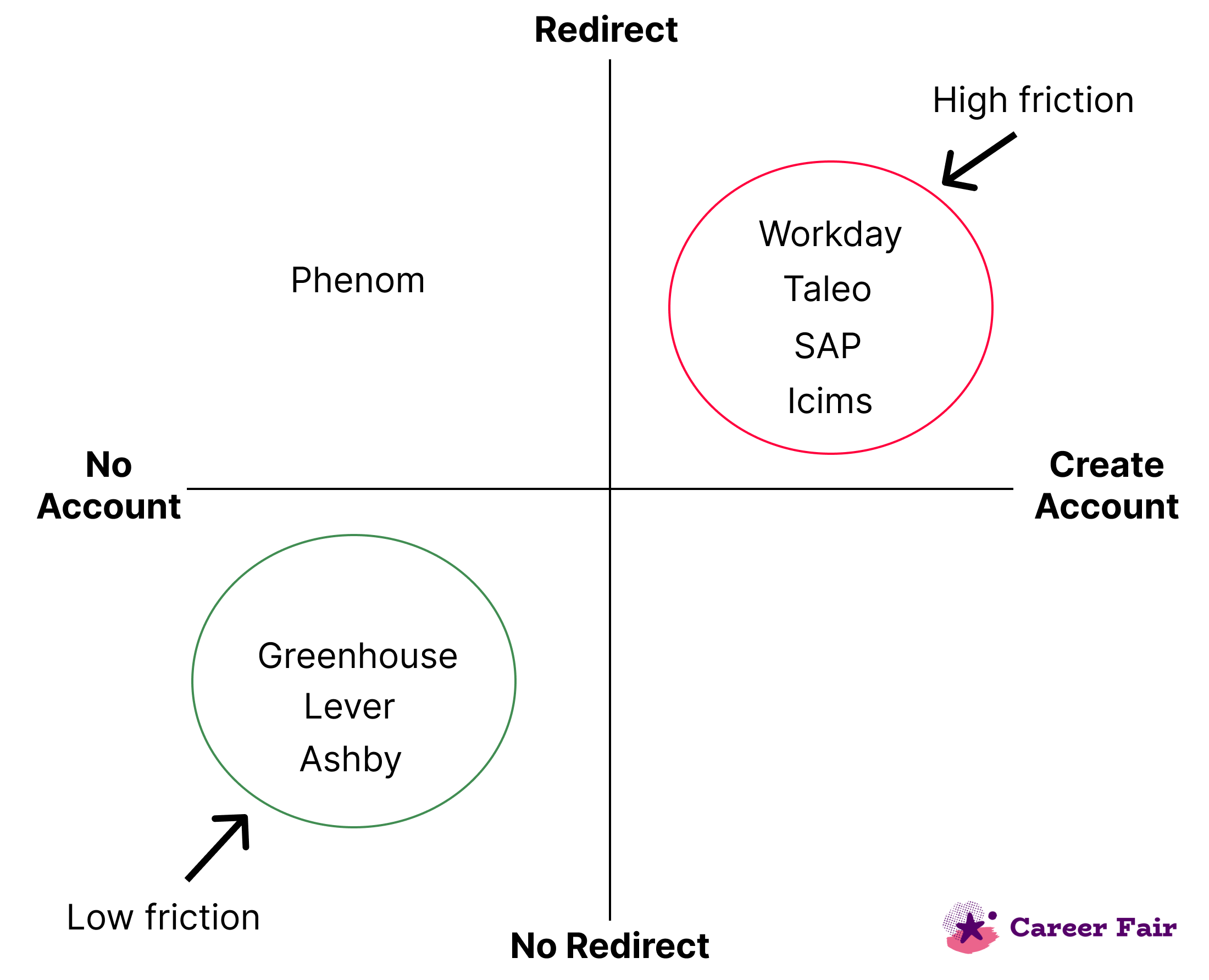
Ideally, you want the ATS to be in the bottom left corner. This creates an experience that is low friction and fast.
If we plot application time versus ATS, this is what we get:
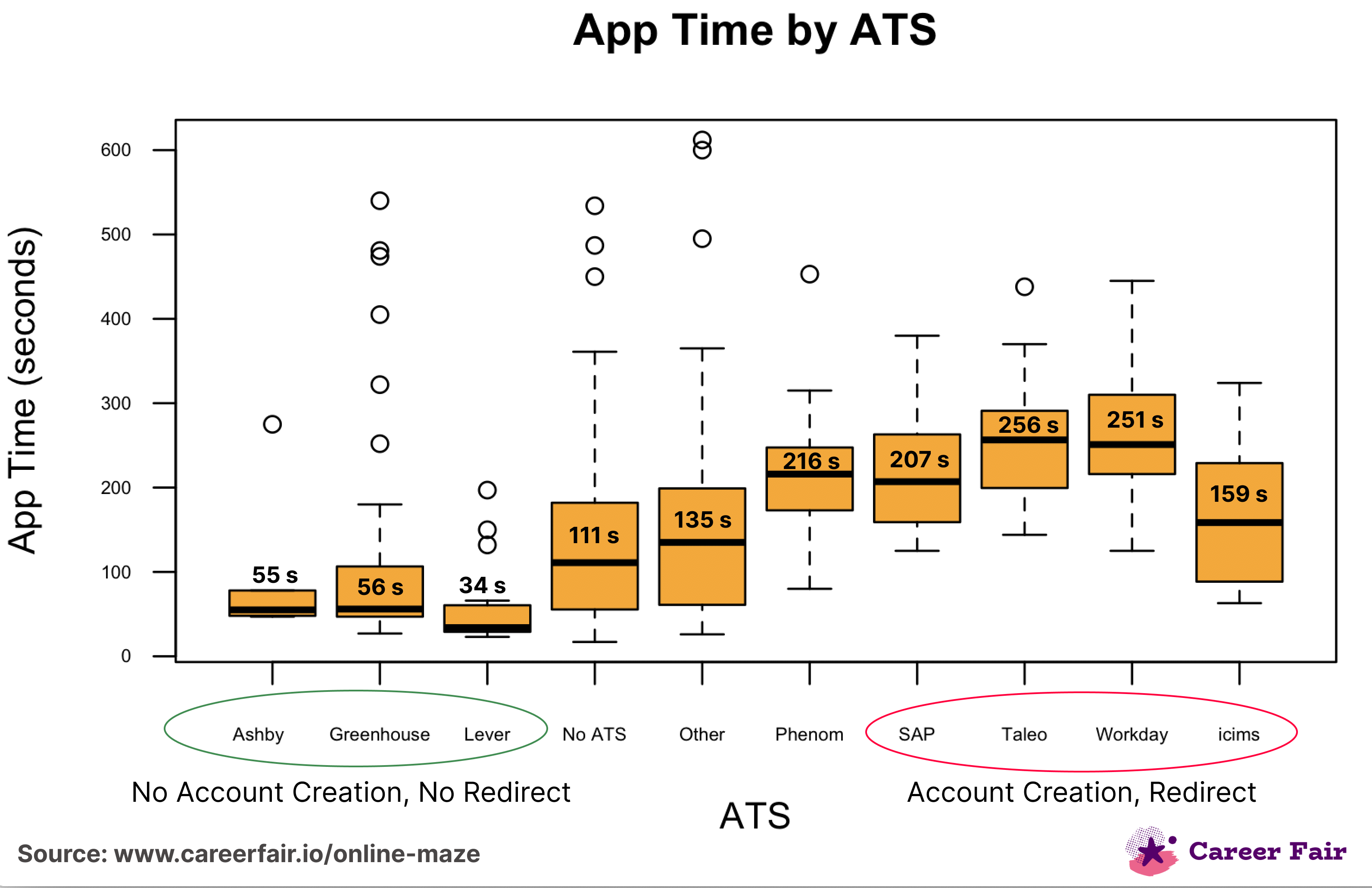
The ATS that don’t make you create an account and don’t redirect you are tied to lower application times than the ones that do.
One possibility is that certain companies are more likely to use certain ATS. Big companies might use Workday for better compliance reporting. Same with the industry - maybe B2C software companies use the newer ATS on the market. These would be confounding variables, meaning that we may misinterpret a relationship between the ATS and the application time when in fact there isn’t one (and the real relationship is tied to the industry or size).
So to properly understand whether the ATS actually has an effect on application time, we need to control for our other variables. We’ll do this in the final section when we run a regression including all our variables.
One of the big frustrations surrounding different ATS is that when you upload your resume, you then need to retype out your experience in the boxes because the ATS resume parser did it incorrectly. For example, I went to UC Berkeley but sometimes got this:
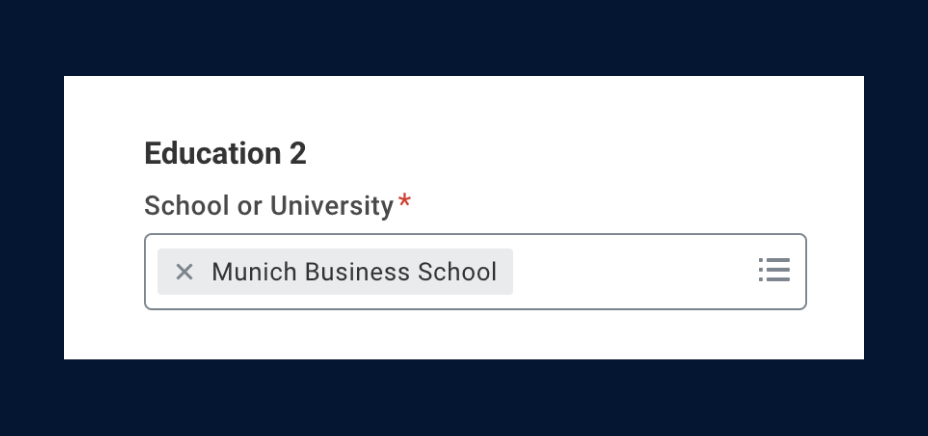
The only resume parser that didn't seem abysmal was the one from Smart Recruiters. TikTok's resume parser also isn't bad.
Another frustrating experience is tied to inconsistency between the company I'm applying to and the ATS.
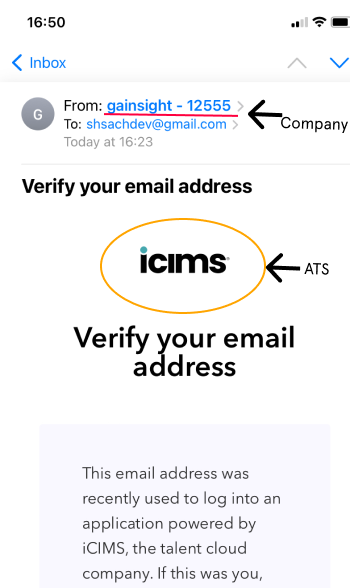
A company’s application process is often the first touchpoint you have with their brand. Startups competing for the best talent can't afford extra steps in their process. Apple and Facebook can.
Whilst the average time to complete a job application may only be 162 seconds, the fact that many ATS require steps like account creation and authentication can lead to application fatigue.
It’s not necessarily the explicit amount of time it takes, it’s the steps involved that drain you of energy and make you want to avoid applying to new jobs.
Industry
Okay, so far we’ve looked at company size and the ATS as a loose indicator of what might make a job application frustrating. What about the company industry?
You would expect industries like banking or professional services to have longer application times, because getting those jobs revolves around having a bunch of credentials which they likely screen for (and ask you to submit) early on in the process.
On the other hand, internet startups I’d expect to be quick and fast. Let’s find out if this is true.
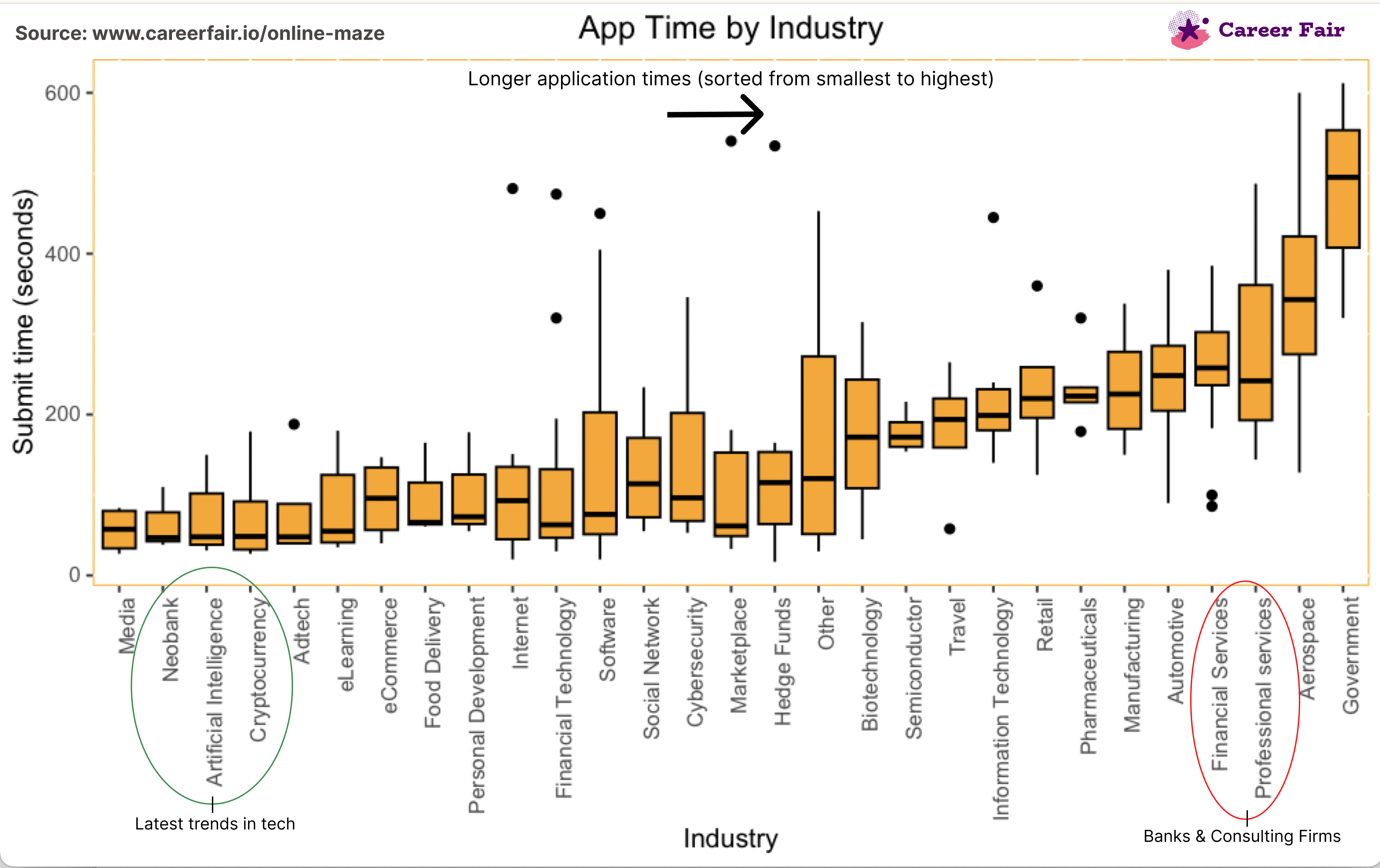
Hyped up industries like AI and Crypto have shorter application times. As expected, banks and consulting firms care about your GPA and ask you to submit it.
A government company has to basically verify your identity before they can even receive your application, so the process is entirely different and reflected in the submission time.
For many technology companies, the application process is almost like an extension of the company’s brand itself. For example, Plaid (an API first Fintech company), has a neat option where you can actually apply to the job via API:
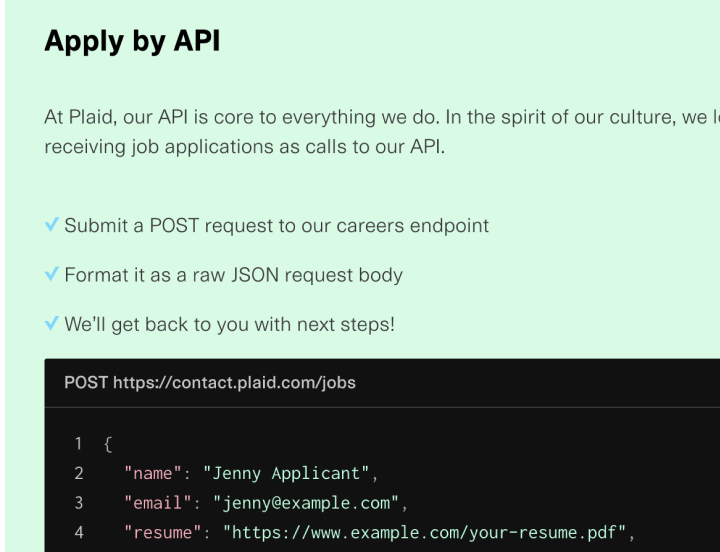
Roblox, a gaming company, allows people to submit job applications from within their games.
We also notice differences between legacy companies and their newer competitors. If we compare legacy banks versus neobanks (like Monzo, Mercury, etc), the legacy players averaged around 250 seconds per job application whereas the neobanks averaged less than 60 seconds.
If you can’t compete on prestige, you need to find other ways. One of those ways can be through asking for less information upfront.
Putting it together
Now that we've analyzed each variable - the company size, ATS, and the industry - to understand the separate relationship of each to application time, we can use linear regression to understand the combined relationships.
This will allow us to determine what factors actually have an impact on the job application time versus which ones might just have had one when we looked at them in isolation.
After some number crunching in R, I get the following results (I’ve only added the statistically significant factors – the ones with the “strongest evidence”):
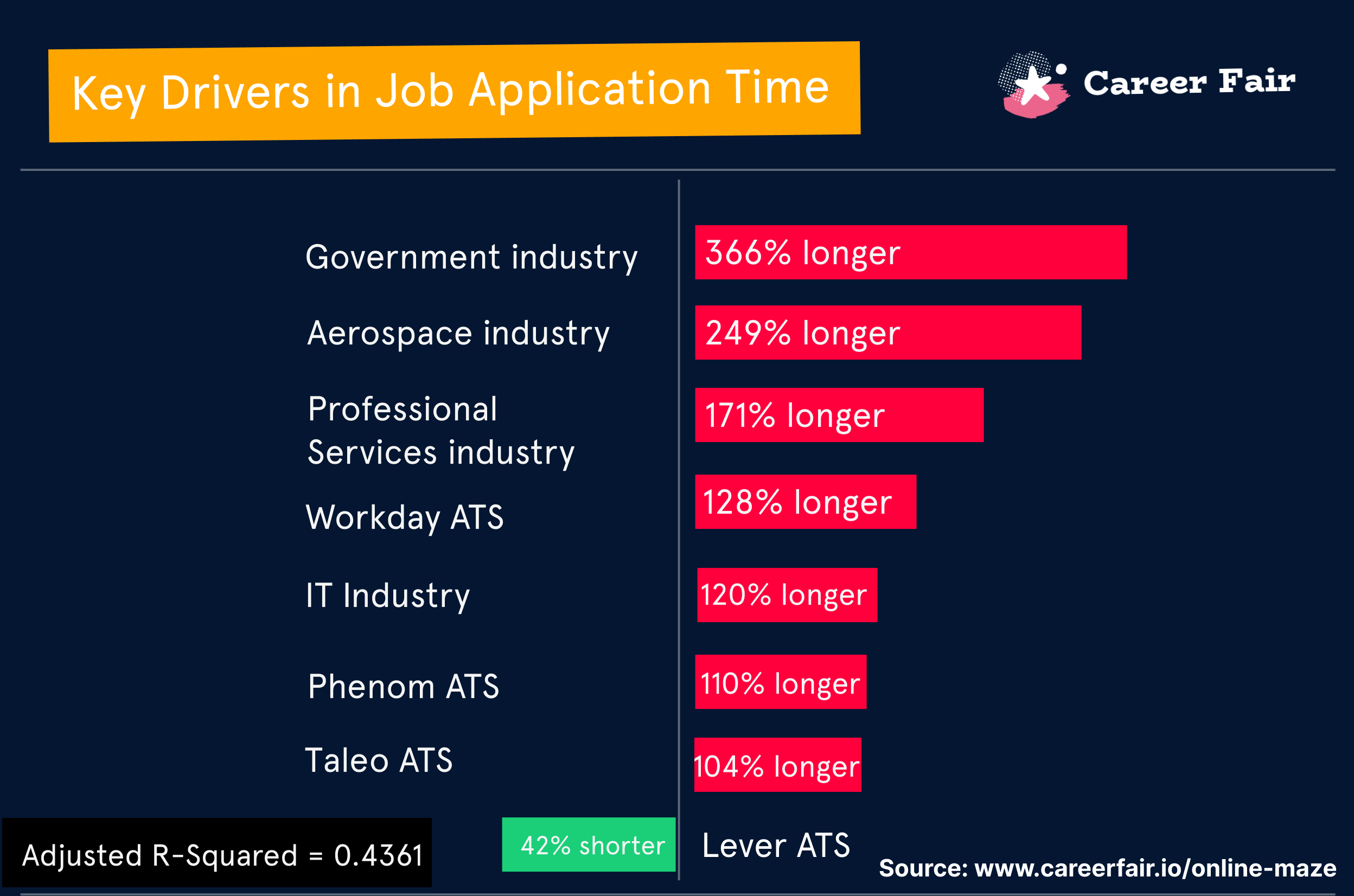
Here’s how you can interpret some of the information above:
- When a job app is for a company that is within the Government industry, the submission time goes up by 366% (assuming the size and ATS are constant). For the aerospace industry, this is 249% (and so on).
- When a job app is for a company using the Workday ATS, the submission times goes up by 128% (assuming the size and industry are constant). For the Phenom ATS, this is 110% (and so on).
- Our only (statistically significant) metric which seems to make job applications faster is the Lever ATS (42% shorter).
Okay, now what about company size?
Well, first up: company size is indeed statistically significant. So there is an effect.
However, its effect is not as strong as most of our other variables. To be precise, here are some ways to interpret our company size coefficient:
- If company size doubles, the app size increases by 5%
- If company size increases by a factor of 10, then the app time increases by 20%
This is a smaller effect size compared to ATS or industry (a 20% increases in app time for a 10x large company is a qualitatively smaller effect size than e.g. a 100% increase in app time for Taleo ATS). So although company size is statistically significant, it is not as strong of a driver as ATS and industry of app time.
Another thing to note is that the effect of company size seems to level off as the company gets large enough (due to the log transformation). The plot below shows this.
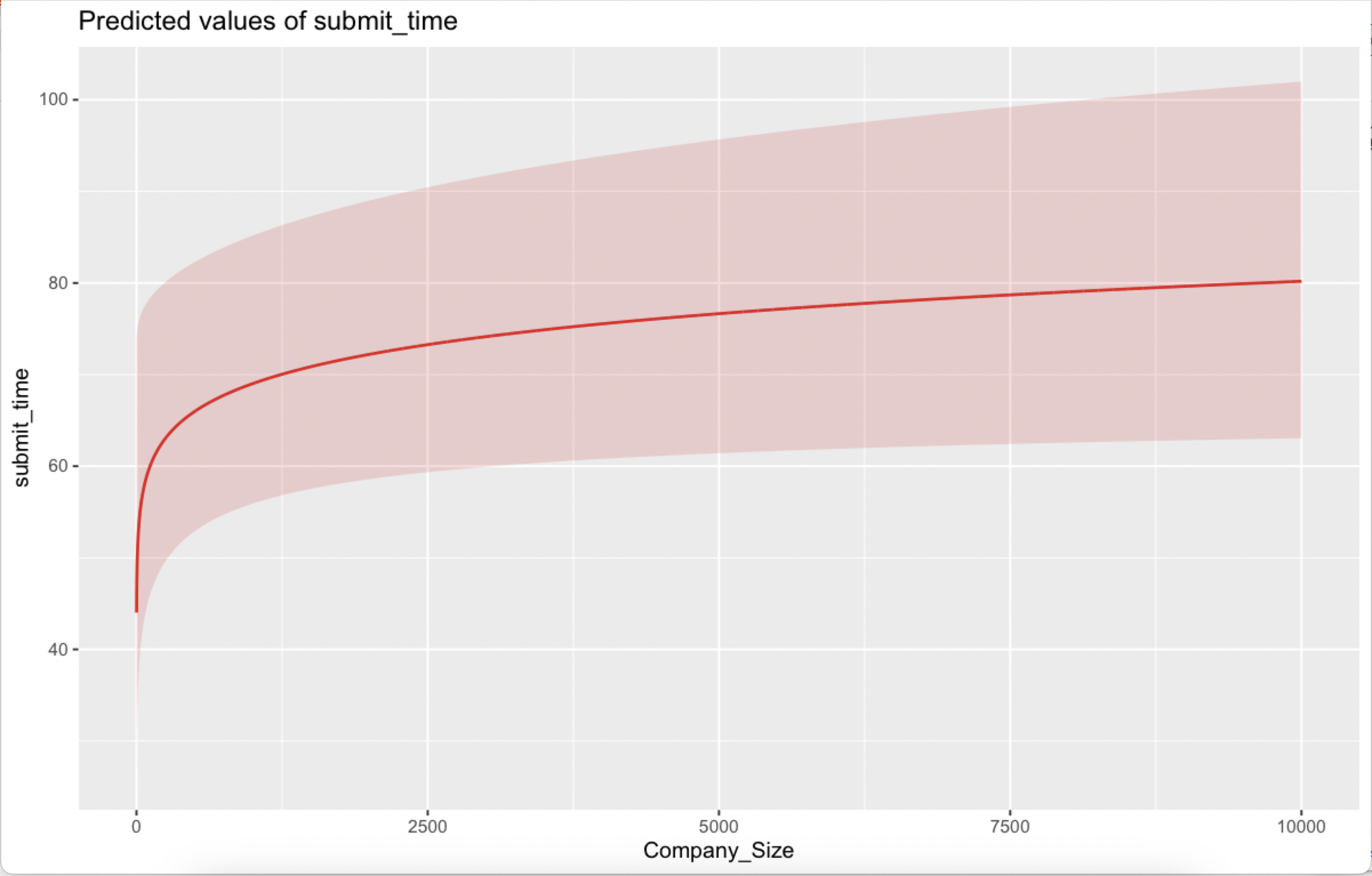
Wrapping it up
Two and a half minutes might not be too long, but it can feel like an eternity when you’re forced to answer the same questions and upload the same documents. Over and over again.
Think about catching a flight. All you want is to get on the jet. Hawaii awaits.
But first: the security line. You have to take your shoes off. You get patted down and your bag gets searched. The gate numbers don’t make sense. And then at the end of it, your flight’s delayed. Congrats.
Applying to a job can feel similar. All you want to do is say aloha to the hiring manager, a real human being.
To even have the remote possibility of making that happen, you need to create an account and password, check your email, retype your entire resume, tell them the color of your skin, and explain why this company you’ve never heard of before is the greatest thing on Earth.
And for what? Most likely for the privilege of receiving an automated email about two weeks later rejecting you.
If we make it tiring and unappealing to look for new opportunities, then we prevent people from doing their best work.
But what would a world where applying took just a few seconds actually look like? Recruiters would get bombarded with resumes. It's possible to argue that job applications taking so long is a feature, not a bug. You get to filter for intent and narrow down your application pool.
Is it fair to shift the burden of screening unqualified candidates onto good candidates that now need to provide so much information? Shouldn’t that burden fall on the recruiter?
The truth is that applying to a job via the careers page is a bit of a rigged game. The odds are not in your favor.
Sometimes, though, all you need is to only be right once.
***
If you made it all the way to the bottom, you're a star. This took a while to write. I hope you enjoyed it.
You might also enjoy reading:
Next up
I hope you enjoyed the piece. In my next article, I investigate the Strange World of Referral Bonuses - enter your email and I'll deliver it straight to your inbox when it's out in 3 weeks.
Feel free to hit me up on Twitter or email me. Here's my Linkedin.
Continue browsing the site.
Article cover image credit to Humberto